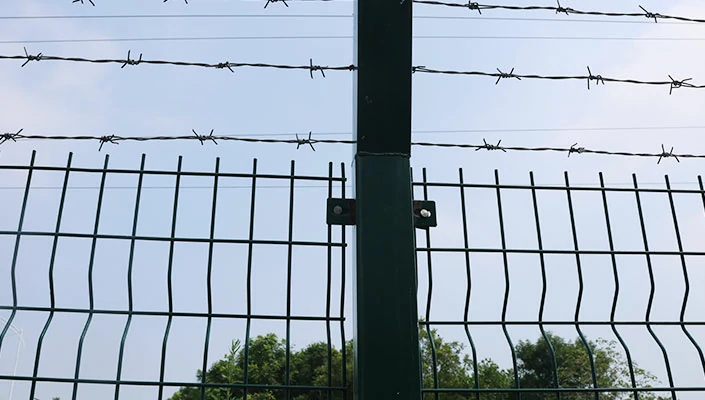barbed wire fence supplies
The Essential Guide to Barbed Wire Fence Supplies
When it comes to securing properties, managing livestock, or simply marking boundaries, barbed wire fencing remains one of the most practical and effective solutions available. This age-old method of fencing has stood the test of time, owing to its durability, cost-effectiveness, and versatility. However, to successfully install and maintain a barbed wire fence, one must be well-acquainted with the essential supplies required for the job. In this article, we will explore the necessary materials and tools for barbed wire fencing, as well as some tips for effective installation.
Key Supplies for Barbed Wire Fencing
1. Barbed Wire The primary material you will need is, of course, barbed wire itself. This wire is typically made from high-tensile steel, which provides strength and durability. Barbed wire comes in various gauges (thickness) and styles, with different spacing of the barbs. Choose the gauge based on your intended use—thicker wires are often best for large livestock, while thinner gauges may suffice for smaller animals or decorative purposes.
2. Fence Posts The foundation of any fence is its posts. For barbed wire fences, wooden, steel, or fiberglass posts can be used. Wooden posts are generally spaced every 8 to 12 feet, depending on the fence's design. Make sure to choose pressure-treated wood or weather-resistant materials to enhance durability. Steel posts, often referred to as T-posts, provide added strength and longevity.
3. Wire Tensioners To ensure your barbed wire maintains the appropriate tension, wire tensioners are crucial. These devices allow you to adjust the tightness of the wire, preventing sagging and ensuring the fence remains secure over time.
4. Insulators If you're considering using an electric component alongside your barbed wire, insulators are necessary to prevent electrical current from grounding out on the posts or other structures. These come in various types, including screw-in and clip-on insulators, depending on your fencing setup.
5. Fasteners Solid fasteners such as staples or clips are used to attach the barbed wire to the posts. Choose rust-resistant materials to prolong the lifespan of your fence. Typically, 1.5 to 2-inch staples work well for wooden posts, while special clips are used for metal posts.
6. Gates Every fence needs a means of access. Invest in a durable gate that matches your fencing materials. Gates must be strong enough to withstand pressure from livestock or vehicles and should align well with the overall design of your fence.
barbed wire fence supplies

Tools Required for Installation
In addition to the supplies mentioned, you will also need some tools to help install your barbed wire fence.
- Post Hole Digger or Auger For setting your posts, you’ll need a post hole digger or auger to create deep holes that support your posts adequately. - Wire Cutters Strong wire cutters are essential for cutting the barbed wire to the desired length. - Pliers Needle nose pliers may be needed to manipulate the wire, especially when making connections or adjustments. - Level To ensure your fence posts are plumb and straight, using a level is crucial during installation. - Hammer or Sledgehammer For driving wooden posts into the ground and securing wire fasteners in place.
Installation Tips
1. Planning is Key Before you begin, it's essential to have a clear plan and layout of where your fence will be installed. Consider the terrain and any obstacles that may interfere with the installation.
2. Post Depth and Spacing When installing posts, make sure they are buried deep enough to withstand strong winds and the weight of tensioned wire. The standard recommendation is to bury at least one-third of the post length.
3. Maintain Tension Regularly check the tension of your barbed wire. Over time, it may loosen due to environmental factors or animal movement.
4. Safety First While working with barbed wire, wear gloves and protective clothing to minimize the risk of injuries.
In conclusion, having the right barbed wire fence supplies and tools is crucial for a successful installation. With careful planning and execution, you will have a robust and effective fence that serves your needs for many years. Whether you are fencing in livestock, securing a property, or simply establishing boundaries, barbed wire fencing remains a reliable choice.
-
Space-Saving Chain Fence Hacks Vertical Gardening with Cyclone MeshNewsJul.16,2025
-
Innovations in Iron Nail Wire Production for Modern ConstructionNewsJul.16,2025
-
Creative Uses of Wire Netting Fence in Modern Landscape DesignNewsJul.16,2025
-
Barbed Wire Fence Innovations in Anti-Climb TechnologyNewsJul.16,2025
-
Architectural Uses of Umbrella Nails for Aesthetic Roof DesignsNewsJul.16,2025
-
Architectural Uses of Razor Barbed Wire in Secure Urban DesignNewsJul.16,2025




